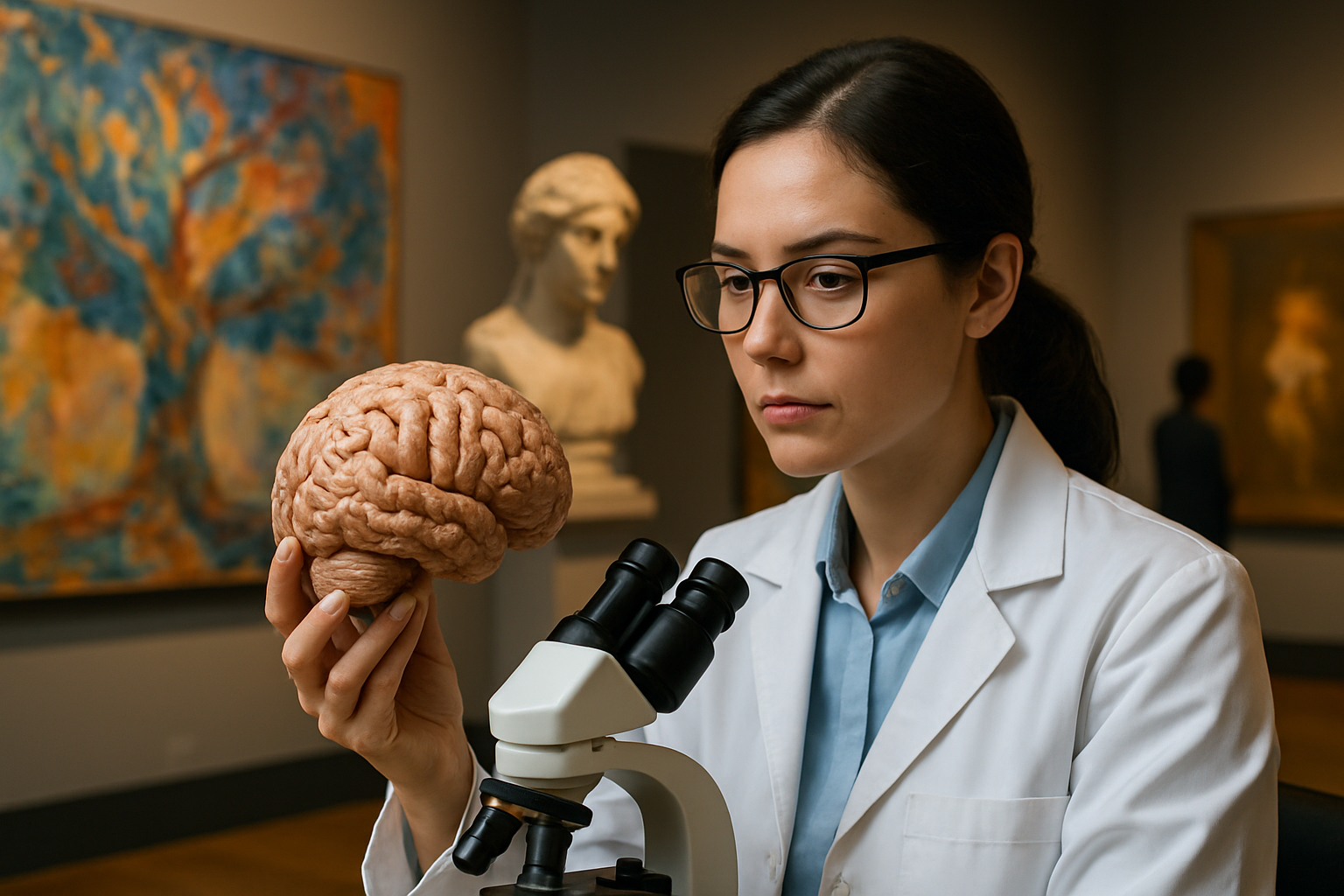Neuroaesthetics: Bridging Art and Brain Science
The intersection of neuroscience and art appreciation is reshaping our understanding of human creativity and perception. Neuroaesthetics, an emerging field blending cognitive science with artistic exploration, delves into how our brains process beauty and artistic experiences. This fascinating discipline offers fresh insights into the nature of creativity, emotion, and cultural expression. Read below to explore how neuroaesthetics is revolutionizing our approach to art and cognition.

Neurological Foundations of Artistic Experience
At its core, neuroaesthetics investigates the neural mechanisms that underlie our perception and creation of art. Studies have identified key brain regions involved in aesthetic experiences, including the visual cortex, prefrontal cortex, and reward centers. For instance, when viewing a beautiful painting, the ventral striatum - associated with pleasure and reward - shows increased activity. Similarly, the default mode network, linked to introspection and creativity, becomes more active during artistic engagement. These findings suggest that art appreciation is not merely a cultural construct but has deep neurobiological roots.
Cultural Influences on Aesthetic Perception
While neuroaesthetics reveals universal patterns in art appreciation, it also highlights the role of cultural influences. Research shows that our aesthetic preferences are shaped by both innate neural mechanisms and learned cultural experiences. For example, studies comparing Western and East Asian participants have found differences in how they process visual information in artworks, reflecting distinct cultural approaches to composition and perspective. This interplay between biology and culture offers new insights into the diversity of artistic expression across societies and challenges notions of universal beauty standards.
Implications for Art Education and Therapy
The insights from neuroaesthetics are transforming approaches to art education and therapy. Understanding how the brain processes art can inform more effective teaching methods, helping students develop their artistic skills and appreciation. In therapeutic contexts, art-based interventions are being refined based on neuroscientific findings. For instance, art therapy for individuals with neurological conditions like dementia or stroke can be tailored to engage specific brain regions, potentially enhancing cognitive function and emotional well-being.
Future Directions and Ethical Considerations
As neuroaesthetics continues to evolve, it opens up exciting possibilities for understanding human creativity and perception. Advanced neuroimaging techniques and artificial intelligence are enabling more nuanced studies of artistic experiences. However, this progress also raises ethical questions. How might a deeper understanding of aesthetic preferences influence artistic creation and marketing? Could neuroaesthetic insights be used to manipulate emotional responses to art or media? As the field progresses, researchers and ethicists must grapple with these complex issues to ensure that neuroaesthetics enhances rather than exploits our artistic experiences.
Conclusion: A New Lens on Art and Mind
Neuroaesthetics offers a fresh perspective on the age-old question of how we experience and create art. By bridging the gap between science and aesthetics, it provides valuable insights into human cognition, emotion, and cultural expression. As research in this field continues to advance, we can expect new revelations about the nature of creativity and perception, potentially transforming our understanding of art’s role in human experience and well-being. The ongoing dialogue between neuroscience and art promises to enrich both fields, offering a more holistic view of human creativity and consciousness.





